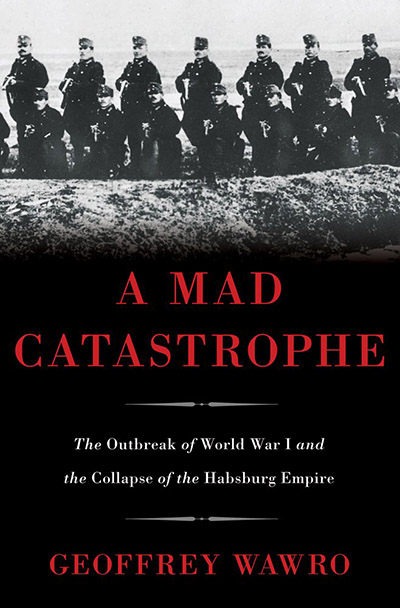
A Mad Catastrophe
The Outbreak of World War I and the Collapse of the Habsburg Empire
by Geoffrey Wawro. 472 pages.
Basic Books, 2014. $29.99.
Reviewed by Anthony Paletta
Though it’s universally accepted that the collision of 20th-century technology and 19th-century tactics dealt an immense and grisly shock to virtually every power in the First World War, one fact remains underappreciated: The blow almost certainly fell most harshly on the power that launched the war—Austria-Hungary. Geoffrey Wawro’s A Mad Catastrophe: The Outbreak of World War I and the Collapse of the Habsburg Empire offers a fascinating addition to the military and diplomatic scholarship surrounding Austria-Hungary’s inept move toward war and its incompetent execution of the conflict. While plenty of attention has been paid to the fairly comprehensible diplomatic calculations that led the Dual Monarchy to war, in the larger histories of the war the typically brief summations of Austro-Hungarian planning and strategy gloss over what, in Wawro’s unrestrained prose, was “a bloody, reckless disaster from beginning to end.”
The catalogue of collapse that was the Austro-Hungarian war experience had its origins in a military establishment that never seemed to have grasped the lessons of the 1866 Austro-Prussian war; in the a budgetary stranglehold induced by the establishment of a dual monarchy; and in a continual unwillingness of the Hungarian state to consent to any modernizing military expenditure. In 1914, Wawro notes, Austria-Hungary had one in 132 eligible men under arms, while France had one in 65 and Germany and Russia about one in 90; even Italy had mustered more of its population than Austria-Hungary. The Habsburgs possessed one gun per 338 soldiers; Germany and France had one per 195.
Compounding this error in the early years of the war, the feeble Habsburg force was deployed in the most ineffective fashion possible. Its mobilization had to wait until its command’s summer holidays were over. Then, despite a massive threat on the Eastern Front, the Habsburg commanders concentrated disproportionate force on the Serbian front, but on both fronts, the Austro-Hungarian attacks were soon repelled with immense casualties.
That’s a common story of war for any power. The difference in the case of Austria-Hungary was that it evinced an almost complete failure to learn any lessons from its early mistakes, continuing to squander the trained core of its army within the first year of the conflict.
Wawro’s comprehensive indictment of the Austro-Hungarian conduct of war closes in 1916, just as German units, armaments, and direction came to supplant them in nearly every theater of consequence. As a reader, having become so accustomed to a string of misfortunes, I would have found Austro-Hungarian success, even under close German oversight, at least comparatively interesting. But the stories of the Galician and Serbian campaigns are undertold in A Mad Catastrophe. Within its span, however, Wawro’s book is an excellent account of where plunging over a cliff will land you: in pieces.
Anthony Paletta writes the Spaces column for the Wall Street Journal and contributes to Metropolis, The Awl, and The Daily Beast.

.jpg)



